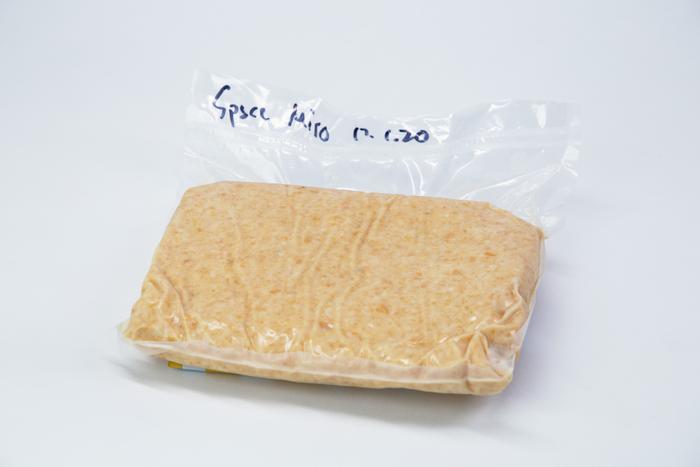In a groundbreaking experiment, researchers have successfully cultivated miso, a traditional Japanese condiment, in the microgravity environment of the International Space Station (ISS). This research, documented in a study published on April 2, 2025, in the journal iScience, sought to understand how fermentation processes behave differently in space compared to Earth. Miso, which is made from fermented soybeans and salt, provided an ideal subject for the team’s investigation into the impact of extraterrestrial conditions on food production, flavor development, and microbial activity.
The experiment was designed to assess fermentation’s viability in space, focusing on how microgravity and increased radiation affect microbial growth and the fermentation process. Co-lead author Joshua D. Evans from the Technical University of Denmark emphasized the importance of investigating these factors, highlighting how they could reshape culinary practices for future long-term space missions. The research aimed not only to expand the astronauts’ diet but also to improve their overall well-being during their time in space.
In March 2020, a specially prepared container of “miso-to-be” was dispatched to the ISS. The miso fermented in space for 30 days before returning to Earth, alongside two control batches that fermented under similar conditions on Earth—one in Cambridge, Massachusetts, and the other in Copenhagen, Denmark. The researchers equipped the fermentation environment with sensing boxes that monitored critical parameters such as temperature, humidity, pressure, and radiation to ensure optimal conditions for the fermenting process.
Upon the return of the ISS miso, the research team conducted an extensive analysis of its microbial communities and flavor profiles. Surprisingly, they discovered that the fermentation was successful despite the unique environmental challenges presented by the ISS. However, it became clear that there were noticeable differences in the composition of bacterial communities among the different batches, with the ISS batch exhibiting distinct characteristics.
Maggie Coblentz, another co-lead author from the Massachusetts Institute of Technology, reflected on the implications of their findings, stating that the fermentation process observed on the ISS could offer insights into how microbial ecosystems can thrive in extraterrestrial environments. The acknowledgement of microbial agency in space raises compelling bioethical questions about the introduction of Earth-based organisms into other environments, prompting scientists and ethicists to reconsider how we approach space exploration.
Taste tests conducted by the research team revealed that while the ISS miso largely mirrored the aroma profiles and flavor characteristics of its Earth counterparts, subtle flavor variations existed. Most notably, the ISS miso was described by tasters as having a nuttier, more roasted flavor compared to the Earth samples. This finding highlighted the unexpected outcomes that can arise from introducing Earthly food production methods into the unpredictable realms of space.
The researchers emphasized that exploring food fermentation in space is about more than just culinary innovation. It symbolizes the interconnectedness of science, culture, and nutrition as humanity ventures into new frontiers. Their study presents a unique confluence of microbiology, sensory science, flavor chemistry, and social considerations, broadening the scope of research in astrobiology and food science.
Coblentz articulated a broader vision for the impact of this research, asserting that food can serve as a catalyst for discussions about the socio-cultural dynamics within space habitats. As humanity looks towards longer missions and potential settlements on other planets, the way we conceptualize food, culture, and community in these settings will be crucial. The design of life-support systems and food production processes can significantly influence not just sustainability, but also notions of belonging and identity in space missions.
The team’s findings also indicate how the unique aspects of the space environment can promote novel forms of fermentation and culinary practices, posing opportunities for future astronauts to enjoy diverse, flavorful foods. Given the potential for enhancing astronauts’ quality of life and psychological well-being, this research is particularly timely as agencies prepare for extended missions to Mars and beyond.
In closing, this pioneering study on the fermentation of miso in space is precipitating new avenues for research in food science and astrobiology. It underscores the remarkable adaptability of life and signals the importance of understanding and utilizing microbial diversity as humanity takes its first steps towards becoming an interplanetary species. By forging connections between food science and space exploration, researchers are not only paving the way for improved astronaut nutrition but are also initiating critical conversations about our planetary responsibilities as we expand our reach into the cosmos.
Subject of Research: Food fermentation in space
Article Title: Food Fermentation in Space: Opportunities and Challenges
News Publication Date: 2-Apr-2025
Web References: N/A
References: N/A
Image Credits: Credit: Jimmy Day
Keywords
Food fermentation, microgravity, space research, ISS, culinary science, microbial communities, astronaut nutrition, astrobiology, flavor chemistry, societal implications of space exploration.




